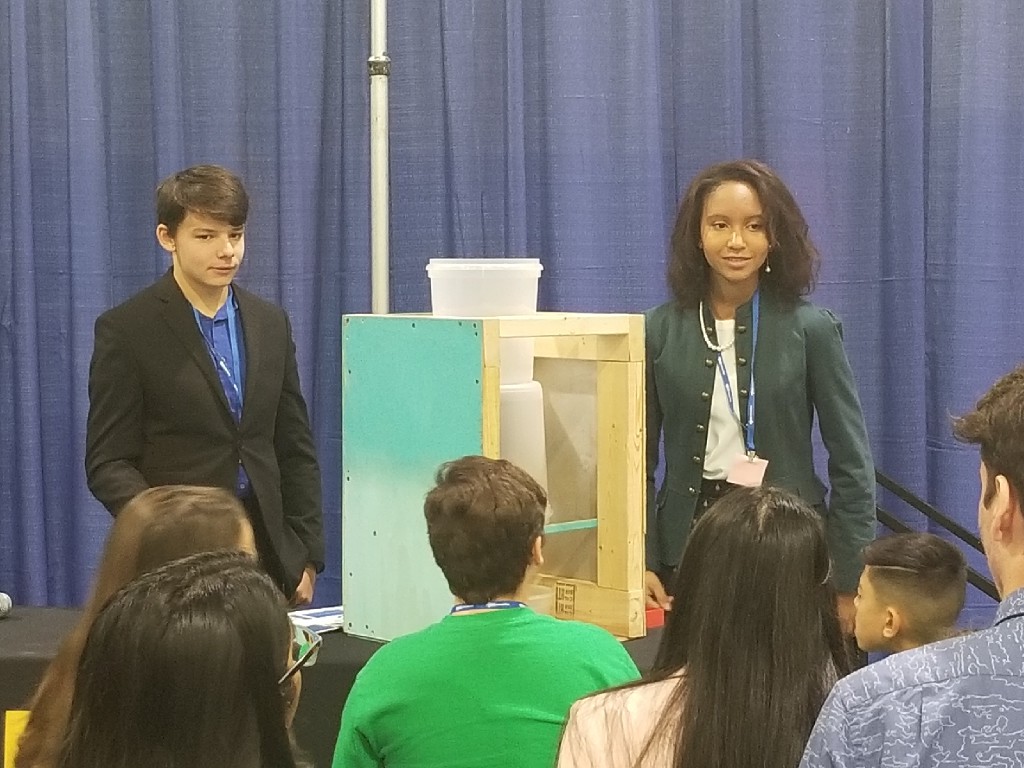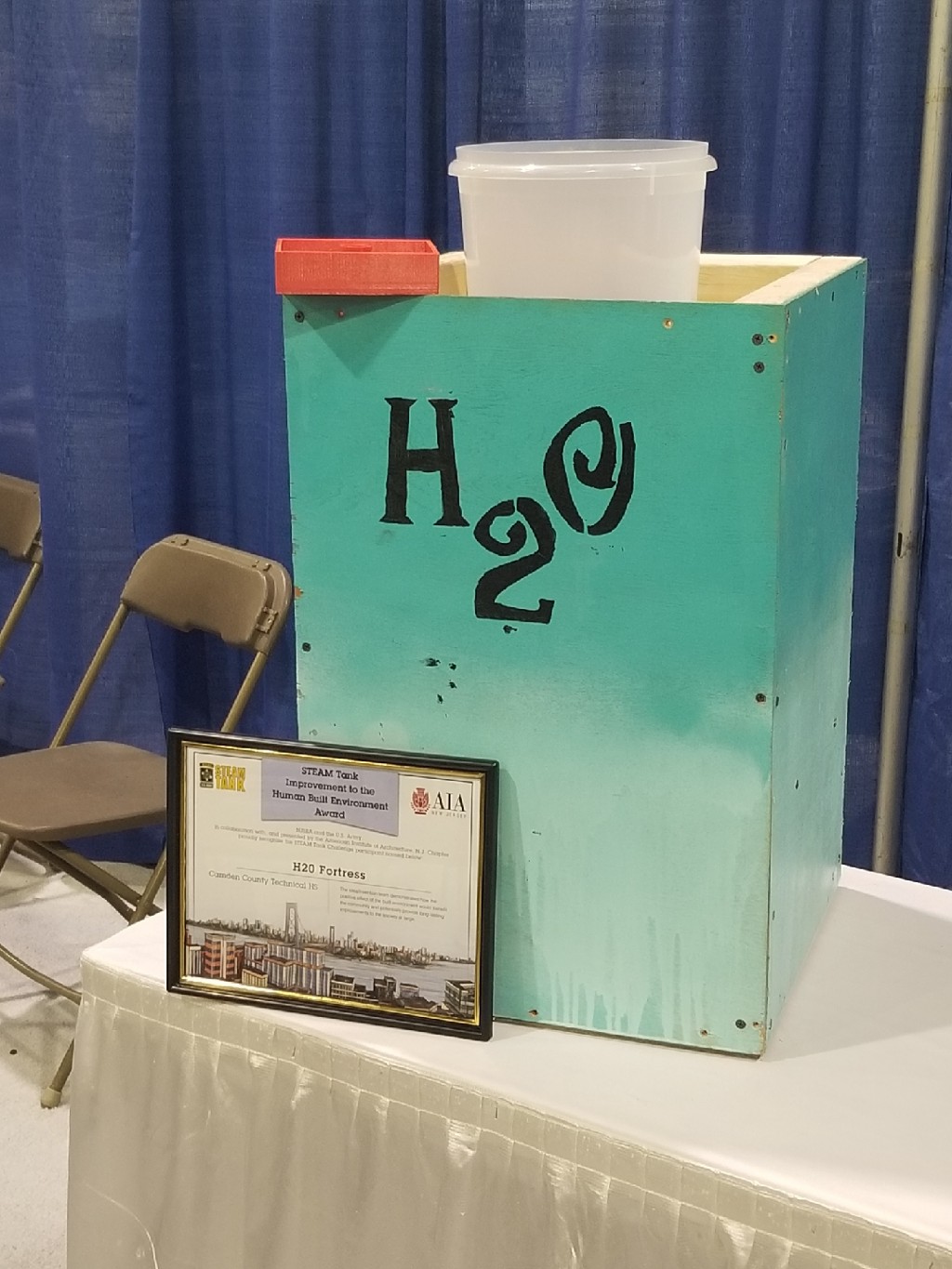
The pair has presented the ‘H2O Fortress’ across South Jersey as they continue to turn a class project into something much larger

More than a year ago, Mikayla Jackson, of Berlin, and Andrew Skurnik, of Sicklerville, started looking over some of the world’s most drastic problems. Desertification came across to them as one of the most important, in dealing with water scarcity.
According to Jackson, it took about a year to finalize all the ideas before working on prototypes. Over a long process, they came to develop the H20 Fortress, with the idea of creating something useful and impactful using easily obtainable tools from around the house or at appliance stores.
The structure, in essence, converts water found in the ground and in the air into drinkable water by three processes. It uses a netting system that allows water vapor to collect and become liquid, a below-ground still apparatus that collects more moisture and finally a purification system that would be composed of elements wherever the structure is applied.

The two have presented their invention across the state at multiple locations, including the STEAM Tank Challenge at the annual NJ School Boards Association Conference in Atlantic City and at the NJ Education Association Conference.
“We assisted on the end of being able to help purchase materials and work on finer details to give them the opportunity,” said Alan Norton, robotics teacher at the Gloucester Township Campus of Camden County Technical Schools. “But these two really manned this project; they came up with the idea, they identified the problem and came up with the prototypes and the solution.”
Skurnik said they originally wanted to base around a system in Peru that uses “high-powered condensers” to turn water vapor into liquid water, however their goal is to make this usable to everyone around the world, especially those without the degrees or education to care for such advanced technology.
“We really focused on trying to make everything easily maintainable, without a high level of education,” Skurnik said.
According to his estimates, using a 250- by 250-foot model of their invention, it could create approximately 225,000 cups of water every 24 hours. If each person drinks eight cups of water per day, 28,000 people per day could utilize it.
“Part of the process educationally as we see it, going through this STEAM Tank Challenge, is putting their work under a microscope in terms of the process, the science behind it, the technology being their concept,” said Tony DePrince, manager of district operations. “I think the next incarnation of this is putting together a business plan and kind of marketing this to people that might be interested in further developing the project.”
Skurnik said the project was so interesting to him because of its importance globally. Although many may view water problems or shortages as a third-world problem or one mostly in Africa, it’s actually one that also hits South America, Europe and even parts of the United States, such as Flint, Mich., and much of California.
“It’s crazy cause in the beginning, you think it’s just a small, class project, but now it can actually help people,” Jackson said. “We’re exploring how we can make this a bigger thing.”









